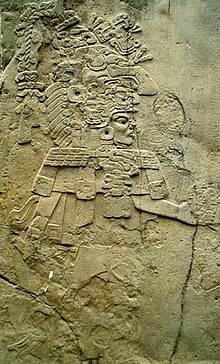169
| 166 167 168 169 170 171 172 Décennies : 130 140 150 160 170 180 190 Siècles : -Ier Ier IIe IIIe IVe Millénaires : -IIe -Ier Ier IIe IIIe |
L'année 169 est une année commune qui commence un samedi.
Événements
[modifier | modifier le code]- Janvier : Lucius Verus meurt d'apoplexie près d'Altinum (Quarto d'Altino), en Italie, lors de son retour à Rome. Marc Aurèle prépare une nouvelle campagne sur le Danube pendant huit mois. Il remarie sa fille Lucille, veuve de Lucius Verus, à Claudius Pompeianus, légat qui s'est distingué dans les combats récents[1]. Il reste seul empereur, n'associant pleinement son fils Commode à l’empire qu'en 176.
- La Rhétie et la Norique deviennent des provinces prétoriennes à une légion (20 000 hommes environ pour les deux provinces)[2]. Lors des guerres danubiennes, faute d’effectif suffisant, l’armée romaine (en théorie 400 000 hommes) enrôle des gladiateurs, des esclaves et même des pillards de Dalmatie et de Dardanie[3]. Pour financer la guerre, Marc Aurèle recours à l’emprunt forcé et fait vendre aux enchères les objets précieux du garde meuble impérial[4].
- Automne : Marc Aurèle retourne sur la frontière du Danube pour continuer les Guerres marcomanes (169-175) ; il installe probablement son quartier général à Sirmium[1].
- 24 octobre : date probable de l'érection de la Stèle n° 1 de La Mojarra en Mésoamérique[5].
- Jingū, impératrice légendaire du Japon.
- Lucius Verus, coempereur avec Marc Aurèle.
Notes et références
[modifier | modifier le code]- Alan K. Bowman, Peter Garnsey, Dominic Rathbone, The Cambridge ancient history : The High Empire, A.D. 70-192, vol. 11, Cambridge University Press, (ISBN 978-0-521-26335-1, présentation en ligne)
- Patrick Le Roux, Le Haut-Empire romain en Occident, d'Auguste aux Sévères, Éditions du Seuil, , 499 p. (ISBN 978-2-02-025932-3, présentation en ligne)
- Heinrich Luden, Histoire d'Allemagne, vol. 1, Impr. de Béthune et Plon, (présentation en ligne)
- Léon Pol Homo, Histoire romaine. Le Haut-Empire, vol. 3, Presses universitaires de France, (présentation en ligne)
- Prudence M. Rice, Maya calendar origins : monuments, mythistory, and the materialization of time, University of Texas Press, , 268 p. (ISBN 978-0-292-71692-6, présentation en ligne)
Lien externe
[modifier | modifier le code]- L’année 169 sur le site de la Bibliothèque nationale de France
Text is available under the CC BY-SA 4.0 license; additional terms may apply.
Images, videos and audio are available under their respective licenses.

